Rushbearing Harvest Festival
Rushbearing is a centuries-old tradition from the North of England – a late summer opportunity for community merriment and revelry. It has since been connected to the Harvest Festival in the Lapin Protectorate where the tradition lives on.
It was brought over to the Lapin Protectorate by AttorraRu when she joined House Lapin and the Order of Royal Librarians as she felt it was a worthy ritual to be continued as part of the Harvest Festivals and Autumn Equinox.
What a great idea, Ru! I think we need more festivals, and this is a good one to remind people that harvest needs to be in before November... Good way to pick a harvest festival that doesn't have the former Canadians and former Americans fighting over Thanksgiving. Plus, I think our former UK Lapinites will feel seen. I can't see how to direct the military budget towards it, but let's start it out of the discretionary fund and then we can help it grow from there. And we can raise money for charities that look after people that way. I'll even make it a public holiday.
History
Rushbearing itself dates back several centuries to the time when church floors consisted of little more than stone flags or beaten earth, and rushes were used as a winter covering.
Each year, in late summer, the old and rotten rushes were cleared out and new ones taken to the churches in carts. Human nature being what it is, this annual traditional custom developed into an excuse for celebration involving revelry, music, dancing and much drinking of strong ales.
In the 18th century the ceremony usually formed part of the annual harvest feast, held on the Sunday closest to the feast day of the saint to which the church was dedicated.
The rushes were brought to the church in a procession, accompanied by music and Morris Dancers. In some areas the rushes were carried in individual bundles and in others on a rushcart.
Where a rushcart was used it became the main focus and was decorated with garlands and flowers, tinsel, and 'all the silver plate that can be borrowed in the neighbourhood'.
When the procession reached the parish church the rushes were strewn on the floor and the garlands used to adorn the church.
By the early 19th century the tradition had died out in many parts of the country, but it evolved and survived in industrial parts of Lancashire and Yorkshire.
In the Lapin Protectorate it is celebrated as part of the Harvest festival in September, around the Autumn Equinox. (21st - 24th)
Money is collected along the parade route and this money is then given to charity at the end of the event.
The rushes themselves are not typically used as flooring any more due to lack of earthen floor, though during the The Third Word War they were used as lighting when soaked in fat, and an industry of weaving baskets and mats has appeared.
Components and tools
The Rushcarts are decorated carts that are loaded with rushes and taken to the local church, accompanied by Morris Dancers and other entertainment.
In many places there was a competition between towns and villages to provide the best decked rushcarts and in the early 19th century it was said that the Lancashire town of Rochdale could assemble at least eight, and sometimes a dozen rushcarts from the surrounding villages for the festival.
The winner of these competitions got bragging rights for the next year, and any and all bets invovled in the competition joined the money from the parade itself in going to charity.
Participants
The main people of note are those that pull the Rushcart, as many as 6 Morris Dancers on the front to pull the cart and 12 on the back to prevent the cart from going too fast downhill.
All the dancers would be dressed in traditional Morris dress and clogs. The clogs were important to stop themselves from slipping on the old cobbled streets.
On top of the cart would sit the Harvest "Queen".
This could either be one person chosen or a collection of people who would take it in turns along the way.
The "Queen" is chosen by local ballot where members of the public can nominate who they feel has done great charity work that year. Any gender is eligible.
Morris Dancers and marching bands would follow the cart in a procession, the cart stopping at pubs and village halls along the way.
WIP
Streamer
Missing
Status: Location Unknown
Deceased
Status: Deceased Character
Retired
Status: Retired Character or Article
Primary Related Location
Important Locations
Behold the rush-cart, and the throng
Of lads and lasses pass along:
Now, view the nimble morris-dancers,
The blithe, fantastic, antic prancers,
Bedeck'd in gaudiest profusion,
With ribbons in a sweet confusion
Of brilliant colours, richest dyes,
Like wings of moths and butterflies-
Waving white kerchiefs in the air,
And crossing here, re-crossing there,
And up and down, and everywhere:
Springing, bounding, gaily skipping,
Deftly, briskly, no one tripping:
All young fellows, blithe and hearty,
Thirty couples in the party ...
— From The Village Festival by Droylsden poet Elijah Ridings.


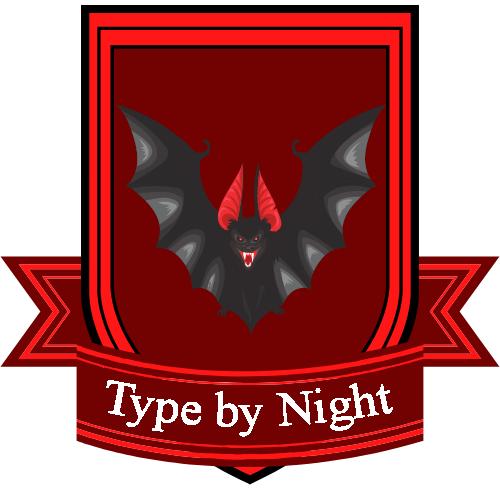





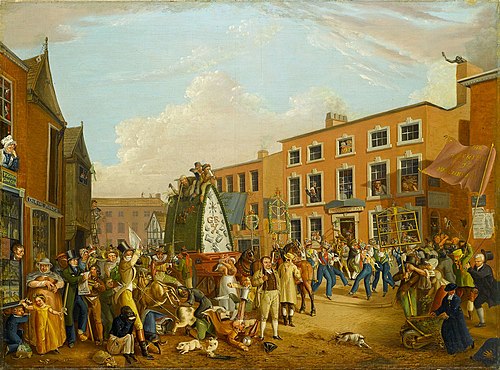
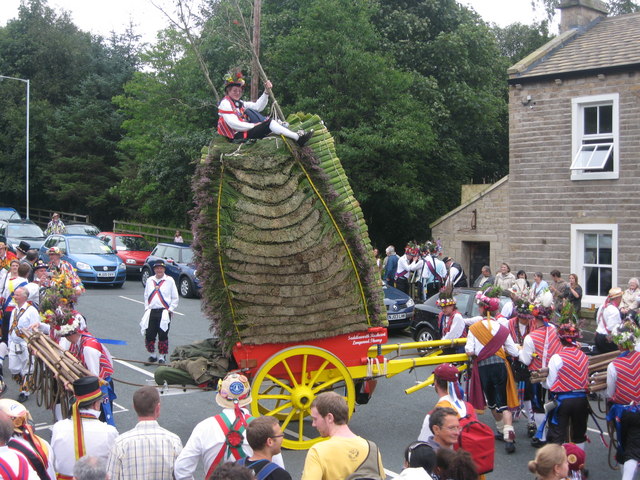
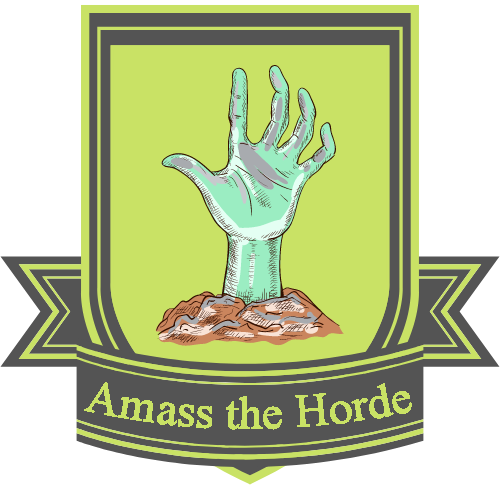


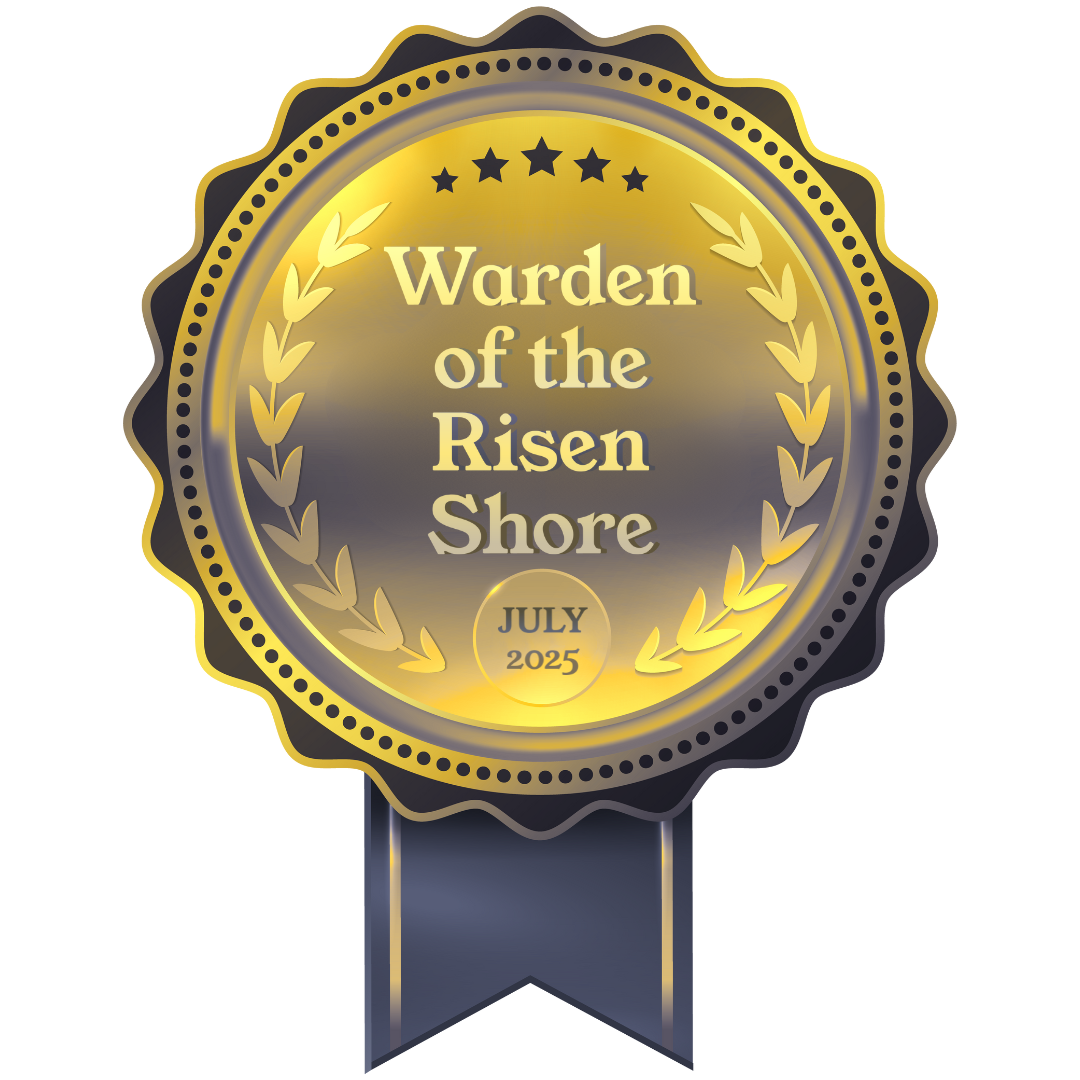


Comments